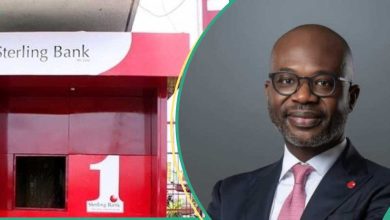BEHIND ZENITH BANK’S SUPERIOR RETURNS

The environment was intemperate , fraught with plenty uncertainties and hick-ups . Ebenezer Onyeagwu , Chief Executive Officer , Zenith Bank Plc , lamented this as much . ’The financial year 2020 was an extra ordinary year and radically so with monumental destruction on public health as well as on local and global economic activities ; the global and Nigerian economies witnessed shocks and contractions . The monetary authorities in order to address the problem reduced its monetary policy rates from 13.5 percent to 11.5 percent “ .
In spite of deleterious operating environment and heated competition, Zenith Bank PLC sustained its superior returns in earnings, profit and dividend growth in the 2020 full financial year .
Overall ,the bank grossed N696bn in earnings in the year under review chalking a 5-1 percent gain from the N 662 billion achieved in the previous quarter, profit before tax grew by 5% to N256bn , profit after tax grew by 10% to N231bn and Net Assets grew by 19% from N942bn to N1.1tn .

The performance,indeed , suggests resilience . The bank’s earnings per share (EPS) , an indicator of a firm’s earning power, moved up to734 kobo, 10.4% higher than the 665 kobo achieved in the corresponding period of 2019.
Highly impressed by the bank’s superlative performance , Onyeagwu who was highly enthusiastic ,made a show of the bank’s investment potentials in a recent investment conference . “Despite the impacts of the pandemic and policy change on the macro economy Zenith Bank key ratios remained very strong as our expansion in the retail space , massive deployment of digital technology were all equally rewarding on our deposit profile” . “It is worthy to say that Zenith Bank remains compelling investment position , indeed if you invested in Zenith Bank in January 2020 when the price was about N19.25 as we speak based on the current dividend payout for the full year of N3.00 and also the capital appreciation , you would have earned a substantial increase in your investment by 552.2 percent in just one year .”, Onyeagwu noted .
He was not the only one who lauded the scintillating returns delivered by the bank . This was confirmed by some analysts as well . ‘’Giving a Price/Earnings Ratio (PE) of 3.58x at its market price of ₦26.30 posted on Wednesday, February 24, 2021 , an investment in the stock for the next 90 days could beat any form of returns from other windows whether Treasury Bills, Bonds, or fixed deposit ” . The bank’s current share price is considered very attractive at 3.58x earnings, being an income stock trading above industry average by 6.23 percent . The implication is that investors are willing to pay more to have an additional share of the bank’s stock .
How did the achieve the above feat ? The outstanding performance in the year under review was a sustenance of the bank’s culture and tradition of excellence . The bank has grown its earnings on yearly basis, while sustaining its risk management efforts, as shown in the management’s ability to contain impairment charges over the years, thereby enhancing profit. This is in addition to maintaining assets of high quality, and a robust balance sheet that supports its outstanding performance, despite the challenging operating environment, leading to high dividend payout.
One of the high points of its performance was its ability to boost its asset base superlatively . The bank’s balance sheet experienced a dramatic upswing during the year under review. The bank saw a 34 per cent surge in its asset base in 2020, lifting the value from N6.347 trillion to N8.481 trillion in one year and making it Nigeria’s biggest bank by asset . A puffy assets level could indicate improved strengths in mopping up transactions, including a better position in maturity transformation- the stuff banks are best suited for. It can also mean that the bank has applied some elastic to its wings in the form of more customer touch points, branches and Point of Sale devices. For zenith, it was all of these and more.
The management did not stop at that . Only by stretch and leverage could a firm rewrite the rule . It is not the size of assets but how best you could leverage it for better performance. . Just as bigness without stretch and leverage is obesity, smallness without stretch and leverage is impotence. The bank is highly strategic . The bank leveraged this size advantage to tap and capture disproportionate share of mega-opportunities in the industry . This was to be expected from a bank which ‘focuses and channels its resources only on its core corporate and retail banking activities’, activities which require steep marketing capabilities, and in a world where IT is ubiquitous, a firm understanding of delivering tech based services.
Zenith Bank has proved from its inception that it is competing for the future . The bank has continued to create the future and constantly searching for ways to apply its competencies in novel ways. It saw technology as a weapon of service delivery and competition ahead of the then incumbent leaders . To tap into its overarching potentials , It created a link between technology and customers not just currently to satisfy the articulated needs, but to be broadly benefits driven —constantly searching for ,investing in ,and mastering the technology that will bring unanticipated benefits to human kind . Only prescient players could achieve these ; banks that fail in the above ,though big , would remain big for nothing .
All these were put to work to deliver a supersonic increase in deposit and whopping profit in 2020 . Interest expenses were managed down as the bank’s stock of low-cost deposits increased, with interest paid on time deposits declining . During the period under review , driven by its unique brand value and image , the marketing machine of the bank was optimally oiled ; and it would seem this department worked overtime to grow its haul deposits . The Group increased corporate customer deposits, which alongside the growth in retail deposits delivered total deposit growth of 25%, to close at N5.34 trillion, driving growth in market share.
Increased retail activities translated to an increase in retail deposits and loans during the year under review . Retail deposits grew by NGN612.7 billion from NGN1.11 trillion to NGN1.72 trillion year-on-year (YoY). Savings balances significantly grew by 88% YoY and closed at NGN1.16 trillion. This retail drive coupled with the low-interest yield environment helped reduce its cost of funding from 3.0% to 2.1% and also reduced its interest expense.
Although the low-interest environment was a potential spoiler and affected net interest margin, which declined from 8.2% to 7.9% in the current year due to the re-pricing of interest-bearing assets, yet its net income could not be caged .
How did Zenith Bank frustrate this potential spoiler ?
The bank supported businesses by growing Loans and advances . The rationale behind this was that, as deposits grew, the bank could not restrict the comparatively pace of loans and advances, a key component of a bank’s maturity transformation tool.
In reality , though the growth was influenced by the impacts of foreign exchange content , the loan book expanded by 20.5% to ₦2.78 trillion y/y, while the Loan-Deposit-Ratio (LDR) increased to 67.22% (vs 54.09% in 2019). The implication of this is that the bigger this item on the balance sheet, the higher the interest income item on the income statement and then the higher the variability or the higher the credit risk. .
However , with the management daft application of its experience , the bank was able to wrench up its gains from this income stream . Zenith Bank, Nigeria’s biggest bank by profitability, had gross earnings only by 5% in the full year 2020. However, it wrenched up bottom line with a deft application of management’s experience beginning from leveraging net interest income. Despite the low asset yield environment , the bank still guided the growth of interest income by 1.3 percent to at ₦420.81 billion . This lethargic growth in interest income was due low yields prevailing asset environment and loan impairments , the two threats that confronted the bank’s ability to convert income from earning assets to profit.
But by hauling up net interest income Zenith Bank showed that it’s not what you get but what you make out of it that matters . After suppressing interest expenses by 18.5 percent reducing it from N148.5 billion in 2019 to N121.1 billion in 2020, its net interest income significantly increased from NGN267.0 billion in 2019 to NGN299.7 billion in 2020 ; net interest income, which is a guide to how well a bank manages the interest rates it pays for borrowing and lending, was partly responsible for a positive outlook of the pre-tax profit.
Aside low yield asset environment , loan impairment expenses rose by 64.5% to₦39.53 billion . This was much in line with the industry trend prompting the management to make additional provision to cover for the last quarter of the year. Despite this ,the bank maintained a stable and low overall NPL ratio of 4.29% (2019: 4.3%) across the entire portfolio though there was an increase in cost of risk from 1.1% to 1.5%, reflecting the elevated risk environment in 2020.
The above challenges were a result of the low-interest rate environment necessitated by the CBN’s 200bps tweak in Monetary Policy Rate in the year. In spite of this , returns on Loans and Advances to Customers (LAC) rose by 7.7% y/y, compared with a contraction of 14.7% y/y in 2019. LAC dominated the total NI by 59.6%, which is commendable considering the challenging macroeconomic environment exacerbated by the COVID-19 pandemic in the year.
A good manger of a financial institution or bank usually rev up non interest income items of its balance sheet because it holds the key to stabilizing earnings when interest rate volatility or low asst yield is a factor . This exactly was what the management of this did . The gap created by the above challenges were bountifully filled by the bank’s non interest income which witnessed 39.6% increase in at ₦275.64 billion ; the Group recorded 8% growth in non-interest income from NGN232.1 billion in 2019 to NGN251.7 billion in 2020. The increase arose from a combination of growth in the top-line and a significant reduction in interest expense
Although the management was able to prevail on loan impairments and low yield environment by beating down its interest expenses and maintaining sound asset quality , operating expenses , OPEX , constituted a big hurdle against the bottom-line . OPEX (inclusive of personal, depreciation and amortization costs) rose by 10.4% to ₦256.03 billion amid the upsurge in information technology and fuel & maintenance costs by 107.6%and 23.2% respectively. The spike in information technology was driven by the new business norm – social distancing and the nationwide lockdown imposed to check the spread of the virus across the globe, especially in Q2’20, such that the bank like others, effectively utilized digital technology to service its business. As such, OPEX margin increased by 1.76% y/y. Operating costs grew by 10% YoY but are still tracking well below inflation which at the end of the year stood at 15.75%. But with the upside in the income heads, coupled with relatively subdued OPEX, pre-tax profit rose 5.2% to ₦255.86 billion y/y .
Despite the bank’s ability to subdue the operating expenses ,they still impacted negatively on returns on equity and assets as they were reduced from 23.8% to 22.4% and from 3.4% to 3.1% respectively .
However, after the interplay of forces of costs and incomes , the Group still delivered improved net income . . How did it achieve this ? . Total tax liability dropped by 26.6% compensated for by the absence of dividend tax liability while profit after tax rose by 10.4% to ₦230.57 billion. At this income level, earnings per share (EPS) moved up to734 kobo, 10.4% higher than the 665 kobo achieved in the corresponding period of 2019. This resulted in a Price/Earnings Ratio (PE) of 3.58x at its market price of ₦26.30 posted on Wednesday, February 24, 2021
The bank’s balanced sheet remains highly robust in the year under review. Its net Assets grew by 19% from N942bn to N1.1tn while the Group recorded impressive liquidity and capital adequacy ratios of 66.2% and 23.0% and remained above regulatory thresholds of 30% and 15% respectively. Capital Adequacy Ratio (CAR) at this level is a big buffer when compared to the regulatory minimum of 15% for the industry. The bank’s short-term liquidity ratio is healthy at current 1.41x, indicating its ability to fulfill debt obligations as they fall due. Total Liabilities jumped 36.2% up to ₦7.36 trillion, pushing debt ratio to 0.87x (vs 0.85x in 2019). Importantly, shareholders’ equity improved by 18.6% to ₦1.12 trillion.
Speaking on the performance for that financial year, the bank CEO , Onyeagwu , assured stakeholders of the bank’s commitment of continuing to deliver superior returns in the years ahead. He said Zenith Bank remains a clear leader in the digital space, with several firsts in the deployment of innovative products, solutions and an assortment of alternative channels that ensure convenience, speed and safety of transactions. “To continue to cater to the varied appetites of our customers in a constantly changing world and stay ahead of the competition, therefore, we have invested massively in new technologies and innovative solutions in the last financial year. This is geared towards ensuring that we continue to provide best in class quality services that create value for all our stakeholders,” he said.
In 2021, the global economy looks set for a recovery with the rollout of vaccines, and growing confidence, driving an increase in economic activities across most economies. This has also driven an increase in crude oil prices, an improvement in interest rates and recovery from recession in Q4 2020 in the domestic economy.
The Group is well-positioned to maximise the opportunities these recovering fundamentals represent while leveraging technology and expanding its retail footprints to deliver improved returns to all stakeholders.
.







